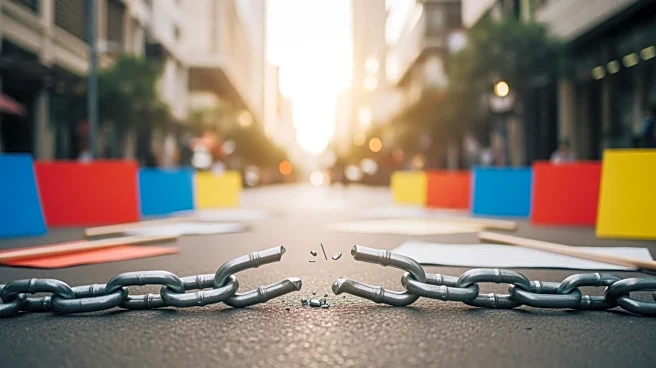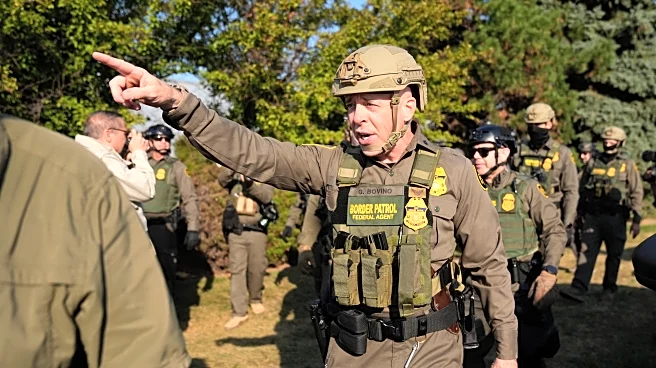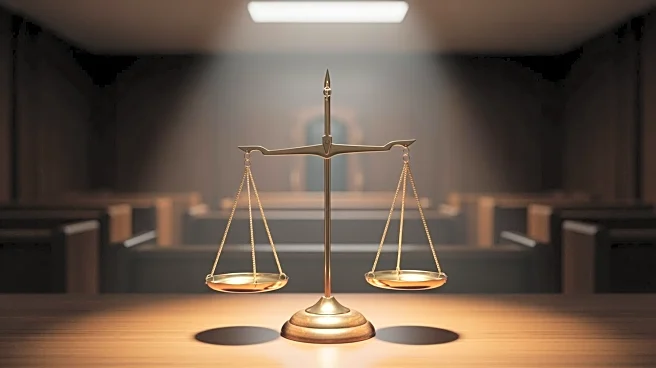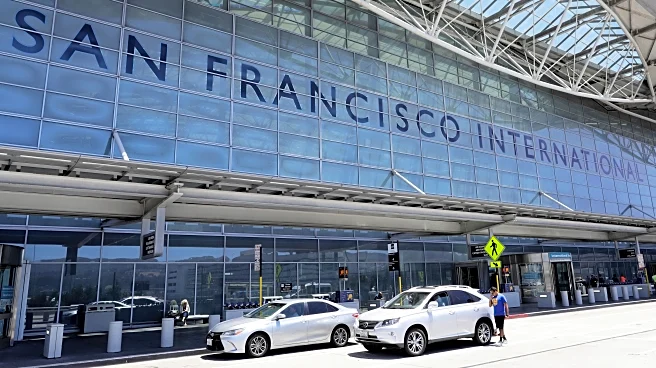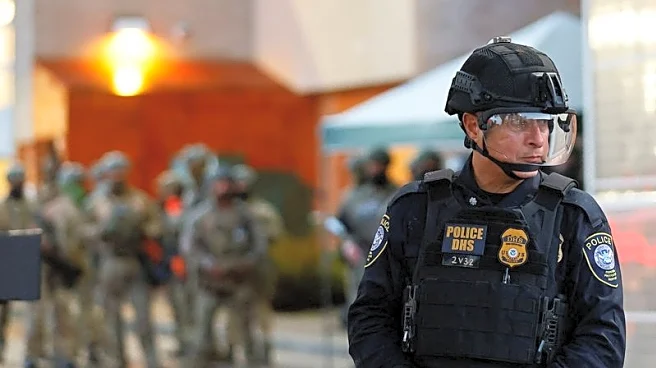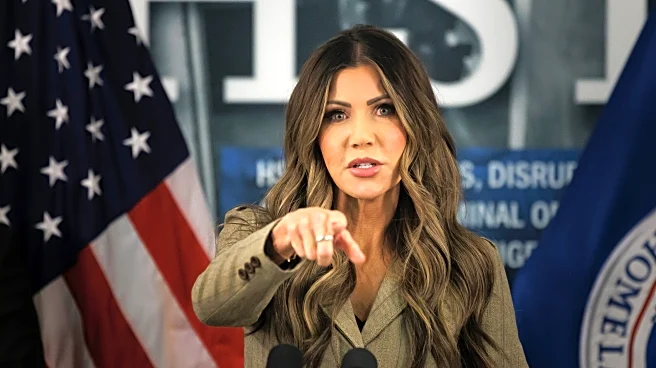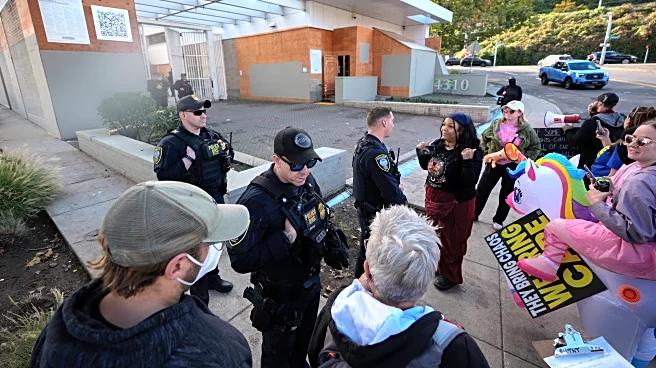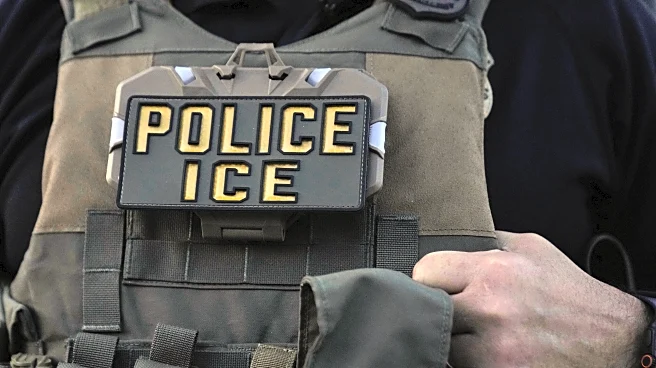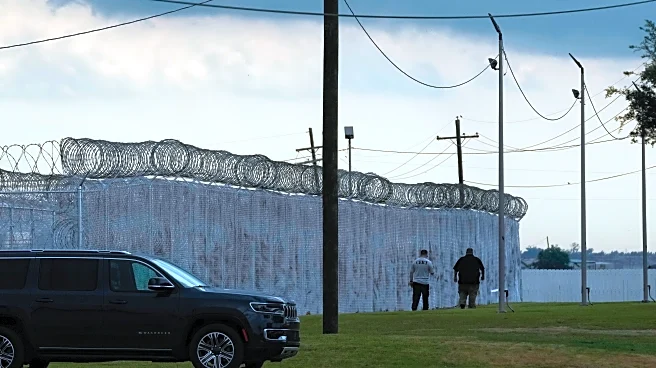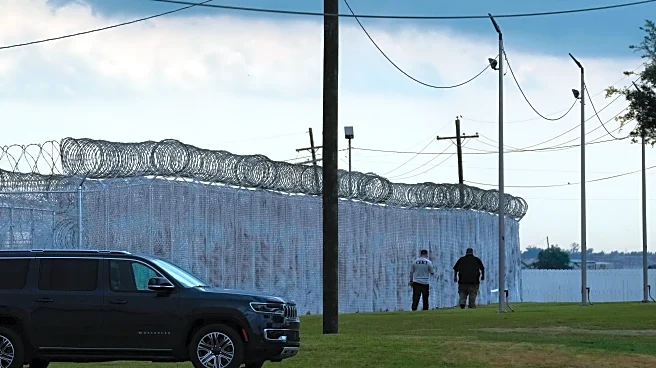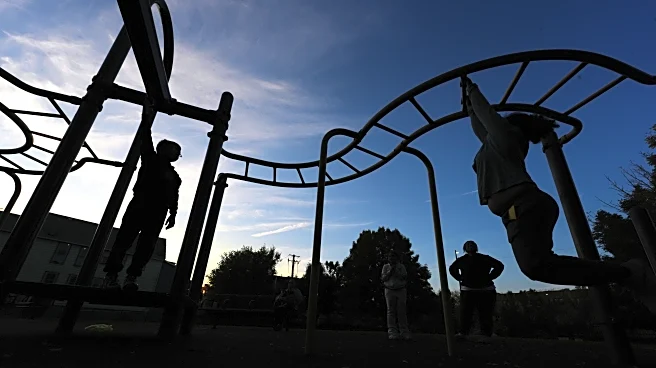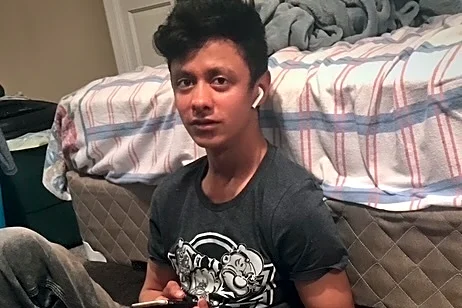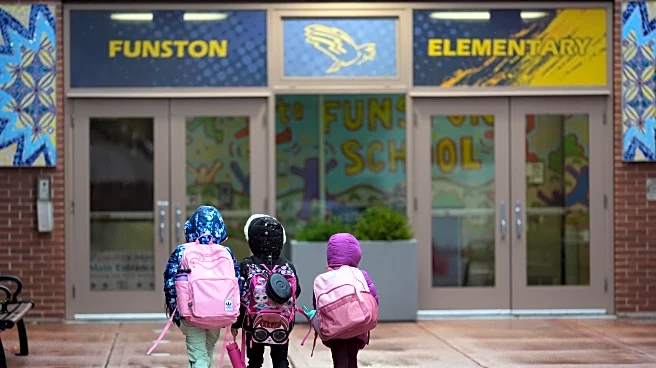What's Happening?
In Little Village, Chicago, students from local schools staged a walkout to protest recent U.S. Immigration and Customs Enforcement (ICE) activities. The protest was organized in response to the Trump administration's Operation Midway Blitz, which began
in September and has led to increased ICE presence in the area. Students, carrying Mexican flags and signs, marched over two miles from Little Village Lawndale High School to the La Villita Arch. The protest was organized by Lia Sophia Lopez, a senior at Social Justice High School, who expressed that the community felt attacked and unsafe due to the federal actions. The march was supported by local residents who cheered and blew whistles in solidarity.
Why It's Important?
This protest underscores the heightened tensions between immigrant communities and federal immigration enforcement under the Trump administration. The students' actions reflect a broader resistance to policies perceived as targeting immigrant populations, particularly in neighborhoods with significant Latino communities. The protest also highlights the role of young activists in advocating for immigrant rights and community safety. The presence of ICE in Little Village has disrupted the sense of security among residents, prompting public demonstrations and calls for the protection of immigrant rights. This event is part of a larger national conversation about immigration policy and enforcement practices.
What's Next?
The protest may lead to increased scrutiny of ICE activities in immigrant communities and could prompt further demonstrations. Community leaders and activists are likely to continue advocating for policy changes and increased protections for immigrants. The response from local and federal authorities will be crucial in determining the future dynamics between law enforcement and immigrant communities in Chicago and beyond. The students' actions may inspire similar protests in other cities facing similar issues.
Beyond the Headlines
The protest in Little Village highlights the cultural and emotional impact of immigration enforcement on communities. It raises questions about the balance between national security and human rights, and the ethical implications of immigration policies. The involvement of students in the protest also points to a generational shift in activism, with young people increasingly taking leadership roles in social justice movements.
